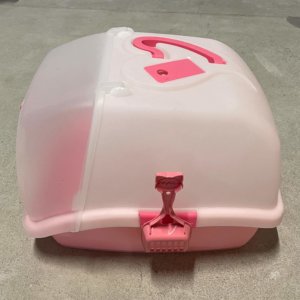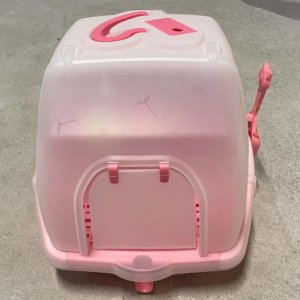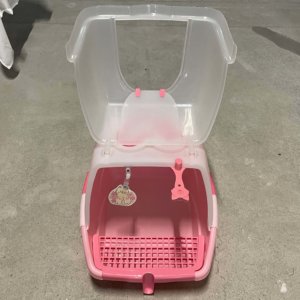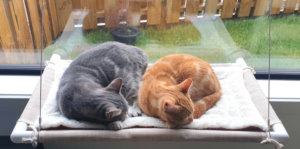The perfect cat lover’s home is a harmonious sanctuary for both cat and human – rich in variety, comfort and safety for all. So, just how can we catify our homes to make it so?
Where is your cat most comfortable?
Before deciding on anything, observe your cat to gauge their personality and preferences when it comes to what makes them feel most at ease. For example, some cats like to keep their feet firmly planted on the ground and are happiest out in the open, some like to hide away whilst maintaining a handy vantage point, and some are happiest at height. Notice whether your cat is predominantly perched high atop furniture, sprawled in the open, or hiding under the coffee table, for example.

Once you have a clear sense of where they are the most comfortable, set about providing them with snug spots that are in keeping with their preferences. That might be a cat tower with a snug bed high up, or perhaps a catcave in the corner of their favorite room (usually the one you occupy the most). Cat caves are great for providing cats with self-warming, cosy beds that make them feel safe, whilst giving them a clear view out to see what’s going on.
Positioning their litter
Make sure that their litter box is located in a low-traffic spot in the house, somewhere easily accessible that they can feel safe to do their business. The placement of litter boxes should also be away from a washer and dryer because of the loud noises they can make, and they should have a clear line of sight so other cats cannot ambush a cat who is using the box. Cats feel vulnerable when going to the toilet, so it’s important to follow these general rules and that their litter box is somewhere quiet that they can retreat to.



In addition to this, it’s also important to make sure that if you’re a multi-cat household that the number of litter boxes you have in the house equals the “number of cats in the house plus one.”
Cat TV
Cats love to stare out of the window as much as we love to stare at the TV, so make sure they have easy access to a prime vantage point for some serious window staring. Clear the window sill off, and if necessary, provide nearby furniture to make their transition to it easier (e
specially if it’s particularly high or narrow to land on). You can even go one step further and create a snug window retreat and add a perch, cat tree or gym, or a bed near a window area for premium window binging.
Minimalise
While we may enjoy having lots of knick-knacks around, it doesn’t make for a very harmonious environment when kitty is constantly knocking things over. Even though they are remarkably skilled at darting around between multiple objects, make sure that they have plenty of space to traverse the furniture when they go exploring. You certainly don’t need to remove everything, just enough to make it easier to ensure that everything stays upright and your cat feels free to roam around without too many obstacles.
Wall climbing
Adding shelves for wall climbing is a great way to add to the indoor variety for your cat. Fixing a series of floating shelves to some of your walls can be a great source of fun and adventure for kitty, and keep them well exercised, particularly if they are an indoor cat.
As a quick word of caution, if you plan on getting shelves for your cat, the shelf itself needs to be able to bear the cat’s weight plus jumping stress. Shelves designed for cats also need to have a grippy surface that a cat can get their claws into so they don’t slip off when landing.
Additionally, if you are a multi-cat household it is best to have alternate routes so that one cat cannot block the way to important things like food, water and litter boxes.
Provide optimal scratching stations
To prevent your cat from scratching at your furniture, it’s important to provide them with somewhere acceptable to do their scratching. That said, many cat parents spend good money on a scratching post only to find that their cat continues to show a preference for their expensive couch. It’s therefore prudent to consider what materials your cat prefers to claw at, and mimic these in the areas you want them to focus on. Try covering a scratch post with similar materials to furniture you are constantly shooing them away from.
Consider a Catio
Catios are great for providing an enclosed outdoor space for your cat without risking them roaming away from the safety of home. You can deck them out with all manner of fun and interesting toys, climbing apparatus, hidey holes and more to keep your cat entertained and exercised.
Catifying your home for safety
A home can only be harmonious for cats if it is also a safe space for them. Here is a checklist for cat-proofing your home:
- Tie up or remove blind cords and other hanging cord loops
- Cover up electrical cords
- Make sure you don’t keep poisonous plants or flowers in reach
- Only light candles that are kept in spots that kitty can’t reach
- Keep cupboards closed, especially those containing any toxic ingredients such as cleaning products
- Use burner covers for your stove
- Keep your trash and compost covered
- Keep your toilet seat lids down
- Store your medications out of reach
- Include your garage when safe-proofing your house, including storing any dangerous chemicals out of reach
- Keep your washer and dryer closed
Final thoughts
There are so many ways to enrich the home environment for your cat, and the best place to start is to observe them carefully and really drill down on what their unique preferences are, and start there. Before that though, prioritise safety and do an overview of the house to make sure that all potential hazards have been addressed.
by Elsa Smith


